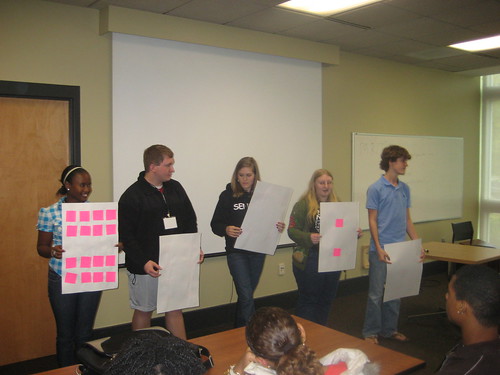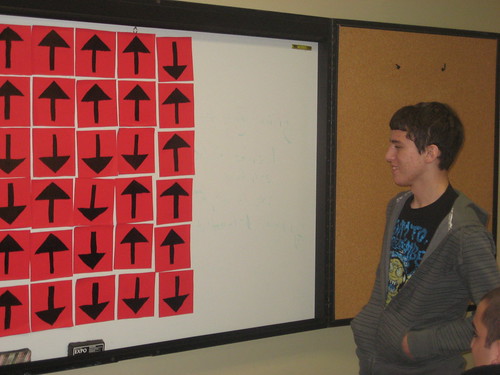Smart App Shows Inside of Horseshoe Buildings
 The new app was developed by students in computer science courses taught by Duncan Buell, standing at left, and assistant professor of new media studies Heidi Cooley, at right.
The new app was developed by students in computer science courses taught by Duncan Buell, standing at left, and assistant professor of new media studies Heidi Cooley, at right.The new entry, "Virtual USC," is taking shape at the College of Engineering and Computing to provide an insider's virtual tour of the Carolina Horseshoe. "This is going to be very cool," said Duncan Buell, the professor of computer science who guided a group of 10 undergraduate students involved in the software application's development during the spring semester. Buell is aiming for a prototype smart phone tour of the Horseshoe in which users can click on Gamecock icons embedded in a campus map to reveal historic and contemporary interior pictures of several buildings.
Among highlights will be the South Caroliniana Library and the Gressette Room in Harper College. University Archives provided historical photos and University Technology Services provided current pictures. "Once we get the first couple of stops on the tour done adding more of them won't be conceptually difficult," said Buell, adding that tours of each building will take users through an animation that walks them to a starting point where they can then access other available images. "With a program like this, once you get the basic structure of the app done, adding locations means a little more work and having to worry about bandwidth and things like that, but it's not that much more of an effort."
Buell embarked on the project with the intent of producing an app for an Android smart phone that would be relevant to a National Endowment for the Humanities-funded computer gaming institute at the University this summer. The institute is a project of the University's Digital Humanities Initiative. "The first couple of weeks the students just brainstormed on various ideas along the lines of, ‘What could you do with a mobile phone like this, and how could you use a location awareness to know where you were and pull up something of interest?' "Gradually, we converged on this project as something that could be done in 15 weeks and end up with close to a 100 percent professional product. It's not really a game, but once you get an app like this built out you can change the content and the programming and easily put it into something else, like a scavenger hunt. "The hard part of the programming is getting all the pieces to fit together with the maps, overlays, and the images," said Buell. "It's not hard dealing with the content once you have it. So this project is partly an adaptation to what we could undertake that was interesting and relevant."
The 10 students were drawn from three different computer science courses. They had worked as programmers and helped come up with the design and structure of the overall software. Once the Android app is working, the next project will be to port it to the iPhone, "a huge difference because the programming is very different," Buell said. The group has also drawn on the expertise of faculty members in the University's Digital Humanities Initiative who offered guidance on such things as the app's visual elements and other factors that would add to its user friendliness and appeal. Buell anticipates that once the app is perfected for both Android and iPhones, it could be adapted to a wide variety of other campus uses. These could include wider virtual tours of the campus, plant or museum tours envisioned by Allison Marsh, an assistant professor of history who supervises the museum track in the history department's public history program, or applications like teaching outdoor courses that link GPS coordinates with radio frequency ID chips positioned at various locations on campus. "You could do a lot of fun applications like this and even expand it to Columbia and the Vista," Buell said. By Office of Publications
Center for Academic Excellence in Information Assurance
The University of South Carolina, thanks to the Center for Information Assurance Engineering, has been designated as a National Center of Academic Excellence in Information Assurance Education (CAE/IAE). The National Security Agency and the Department of Homeland Security jointly sponsor the CAE/IAE program. To receive this recognition, a University must pass a rigorous review based on stringent criteria and demonstrate its commitment to academic excellence in Information Assurance. Dr. Csilla Farkas, the founder and director of the Center for Information Assurance Engineering, has been actively promoting information assurance research, education, and outreach since her employment at USC. The Department of Computer Science and Engineering has been regularly offering information assurance courses since 2000, and a Graduate Certificate Program in Information Assurance and Security since 2004. In addition, the information assurance courses have been evaluated to meet the Committee on National Security Systems (CNSS) Training Standards for Information Systems Security Professionals (CNSS 4011), for System Administrators (CNSS 4013), and for Information Systems Security Officers (CNSS 4014). Completion of the information assurance coursework provides students with a foundation of information assurance and security research and practice, enabling them to solve practical security related problems as well as to make managerial decisions. The program targets graduate students enrolled in one of the graduate level programs offered by the Department of Computer Science and Engineering and IT professionals working in security related fields. As a National Center of Academic Excellence, USC is qualified to apply for specific programs for scholarships and grants. We expect that being nationally recognized will promote USC-wide information assurance awareness, attract quality graduate students, lead to new interdisciplinary research and education activities, and increase external funding in information assurance activities.
Dr. O'Kane receives DARPA grant
Dr. Jason O'Kane has received an award for his research project entitled "Algorithms for Planning Under Uncertainty" from the Defense Advanced Research Projects Agency (DARPA)/DOD.
Dr. Rose awarded NSF grant
Dr. Valafar receives NIH grant
Dr. Valafar has received a grant from the National Institute of Health for his project titled "Structure and Dynamics of Membrance Proteins from NMR Orientational Constraints".
Research Experiences for Undergraduates Continues with New Grant
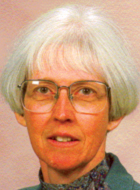

Professors Caroline Eastman and John Bowles have received another NSF grant, this one for $329,364, to continue their efforts with our Research Experiences for Undergraduates (REU) site.
Since 2004 our REU site has hosted student interns overt the summer and provided them with the opportunity to conduct research under the supervision of our faculty. The program also includes multiple special events such as seminars, workshops, visits to local industry and other social activities. The experience helps students learn to work in a professional environment and provides them with a competitive edge when applying to graduate schools.
The program continues to be a large success, with students attending from Universities across the country and many of them going on to do graduate studies in computer science. The program has had a total of 63 participants, about 9 to 11 per year, with over half of them for under-represented minority groups and almost a third female. About 90% of the student participants present their research at regional or national conferences. A recent research project involved the design and implementation of programs for mote communication and tests of its performance under different combinations of temperature and humidity.
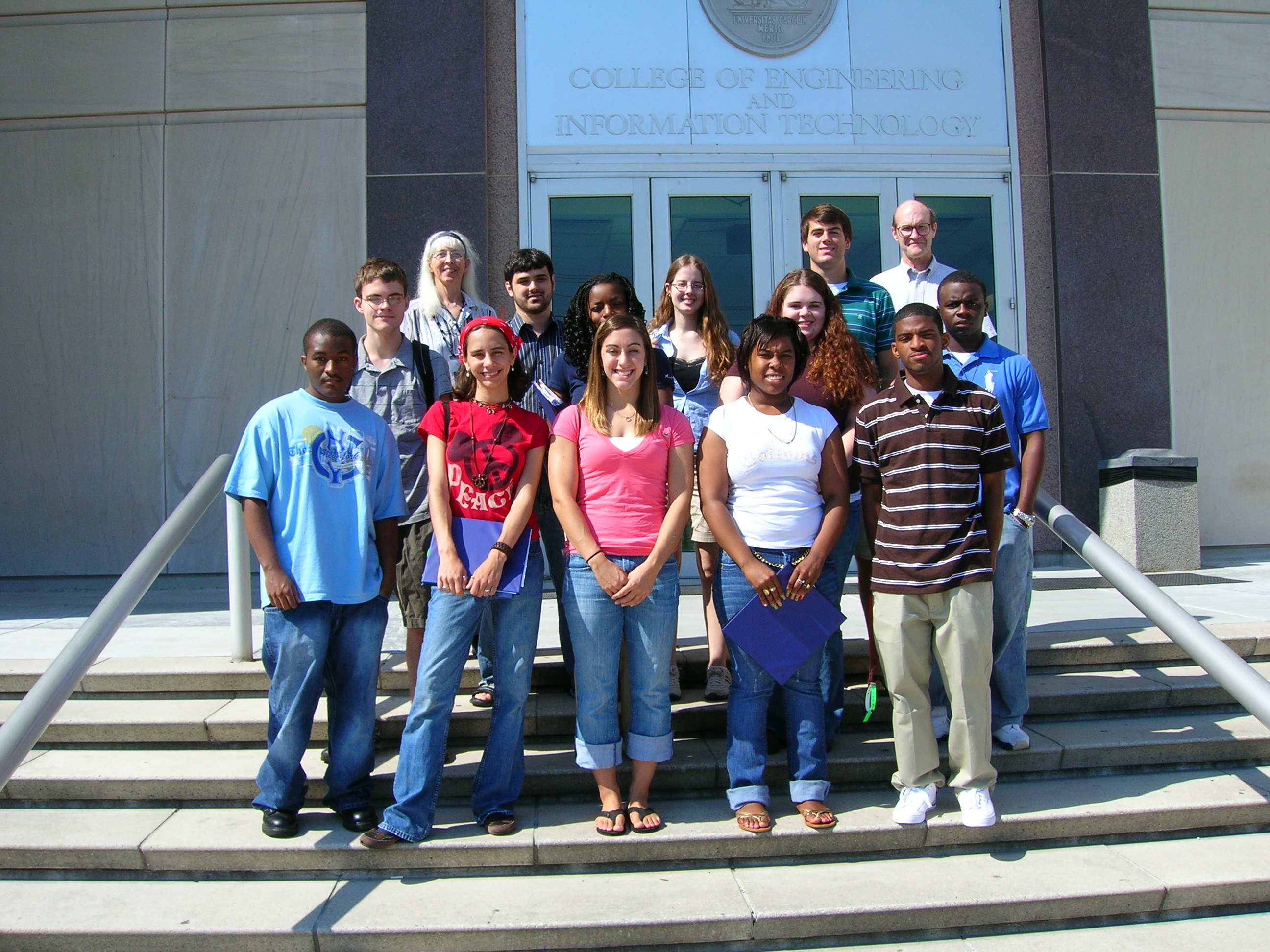
Assistant Professor Jason O'Kane Wins NSF CAREER Award
 Dr. Jason O'Kane, a Computer Science and Engineering assistant professor at the University of South Carolina, College of Engineering and Computing, has received the National Science Foundation's CAREER award totaling $464,466 for five years. The Faculty Early Career Development (CAREER) Program is NSF's most prestigious award in support of the early career-development activities of junior faculty.
His award is titled Algorithms for Minimalist Robot Teams. The award will support O'Kane's research to design algorithms that allow teams of simple mobile robots to complete a wide range of tasks reliably. This research is based on the insight that effective planning is possible for such teams, even in spite of significant uncertainty stemming from both sensing and motion. O'Kane's work builds upon existing work on minimalism for single robots, but must also considers complications that arise from coordination and communication between the robots. These problems are complex and nontrivial at multiple scales: Planning for the multi-robot teams cannot be fully decoupled from the planning and control issues for individual robots.
Dr. O'Kane received his Ph.D. at in Computer Science at the University of Illinois (UIUC). Other awards he has received include the Roy J. Carver fellowship at UIUC and the Outstanding Computer Science Graduate award at Taylor University. He has dozens of publications in major journals and conferences.
The NSF CAREER program recognizes and supports the early career-development activities of those teacher-scholars who are most likely to become the academic leaders of the 21st century. CAREER awardees are selected on the basis of creative career-development plans that effectively integrate research and education within the context of the mission of their institution and department.
The department is now the home of nine NSF CAREER Award winners.
Dr. Jason O'Kane, a Computer Science and Engineering assistant professor at the University of South Carolina, College of Engineering and Computing, has received the National Science Foundation's CAREER award totaling $464,466 for five years. The Faculty Early Career Development (CAREER) Program is NSF's most prestigious award in support of the early career-development activities of junior faculty.
His award is titled Algorithms for Minimalist Robot Teams. The award will support O'Kane's research to design algorithms that allow teams of simple mobile robots to complete a wide range of tasks reliably. This research is based on the insight that effective planning is possible for such teams, even in spite of significant uncertainty stemming from both sensing and motion. O'Kane's work builds upon existing work on minimalism for single robots, but must also considers complications that arise from coordination and communication between the robots. These problems are complex and nontrivial at multiple scales: Planning for the multi-robot teams cannot be fully decoupled from the planning and control issues for individual robots.
Dr. O'Kane received his Ph.D. at in Computer Science at the University of Illinois (UIUC). Other awards he has received include the Roy J. Carver fellowship at UIUC and the Outstanding Computer Science Graduate award at Taylor University. He has dozens of publications in major journals and conferences.
The NSF CAREER program recognizes and supports the early career-development activities of those teacher-scholars who are most likely to become the academic leaders of the 21st century. CAREER awardees are selected on the basis of creative career-development plans that effectively integrate research and education within the context of the mission of their institution and department.
The department is now the home of nine NSF CAREER Award winners.Assistant Professor Chin-Tser Huang receives NSF Grant
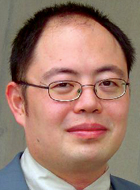
Professor Chin-Tser Huang, an assistant professor in the Department of Computer Science and Engineering, recently received an NSF grant for his project titled Dynamic Early Filtering of Botnet Garbage Traffic".
Currently in the Internet there is an increasing number of unwanted, unsolicited "garbage" packets mainly generated by botnets, which can launch Distributed Denial-of-Service attacks, worm attacks, and spam. These garbage packets are allowed to traverse the Internet to cause severe traffic burdens, waste communication resources, and disrupt the Internet's normal functions. Such packets need to be discarded as close to their sources as possible to increase the availability and reliability of the Internet.
This project aims to address the above problem by establishing a comprehensive and sustainable architecture that coordinates the routers in the Internet to filter out botnet garbage packets from Internet traffic as early as possible. The architecture comprises four major components: rule generation component, rule dissemination component, rule management component, and rule security component. The objective is to investigate and quantify the tradeoff between the saved bandwidth originally consumed by the garbage traffic and the throughput slowdown introduced by the routers' extra filtering overhead, and find optimal solutions under the tradeoff function. The evaluation plan will use benchmarks developed under various traffic traces and network topologies to evaluate the performance of the developed algorithms and technologies, and derive insights on how far and wide the filtering rules should be disseminated and installed under different attack scenarios in order to optimize the performance.
CSE Department Hosts First Columbia Code Camp

The Computer Science and Engineering and its ACM Student Chapter played host to the first Columbia Code Camp right here in the Swearingen building. The event is organized by the Columbia Enterprise Developers Guild and is a meeting of local and invited software developers where they can learn from each other how to use the latest technologies.
By all accounts the event was a major success with over 160 people in attendance. The rooms in Swearingen were filled to capacity and over $10,000 in swag (including two Backberry devices, one XBox Elite, more than 80 books, and many software licenses) was given away. The agenda included talks on technical topics such as LINQ to SQL Tricks and Tips, Parameter sniffing, Silverlight, iPhone SDK, Windows Presentation Foundation as well as general talks on career and wages.
The event was made possible in part by our ACM Student Chapter and other student volunteers who helped visitors find their way around Swearingen and coordinated the use of the facilities.
Below are a few photos from the event. You can view more by visiting the Columbia CodeCamp's flickr page.
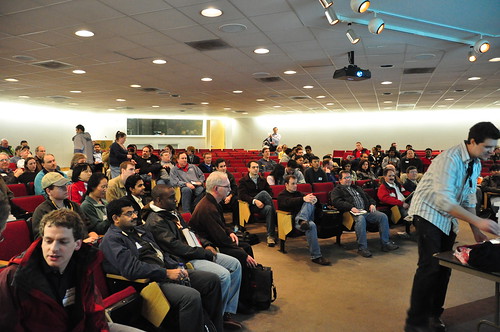
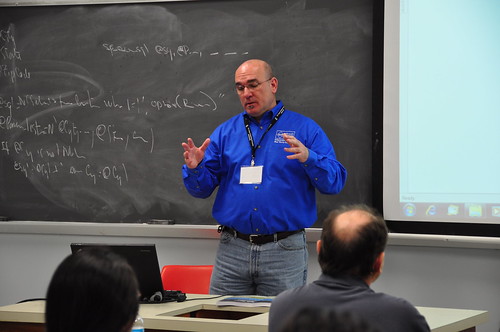
Three CSE Undergraduates win Magellan Scholarships
The Magellan Scholar program was created to enrich the academic experience of USC's undergraduates through research opportunities in all disciplines from science, technology, and medicine, to theatre, music, and art. By providing access to faculty mentoring relationships and a professional research experience, this program enables students to creatively explore their interests at a more in-depth level than can be attained in the classroom. The Magellan Scholar program provides opportunities for undergraduates to build a competitive edge in the job market.
We are proud to announce that three of our undergraduates have received Magellan scholarships this Winter, they are:
- Amadeo Bellotti
- Travis Robert Taylor
- Alexander C. Wong
Reaching out to High School Students
This week is Computer Science Education week, a time when the Computer Science educators in the nation try to draw attention to the ever-increasing market demand for software developers as contrasted by the decreasing focus in Computer Science at the high school level. A press release from the National Science Foundation highlights the problem:
Only 16,622 high school students entering college take the Advanced Placement (AP) computer science exam, according to the College Board that administers the AP tests. Compare that with the over 230,000 students who took the AP Calculus AB exam and the over 360,000 students took the U.S. History AP exam, and the neglect of computer science at the K-12 level comes into the focus.
Meanwhile, market demand for computer science majors continues to grow. According to the Bureau of Labor Statistics report on employment projections software engineers are among the top 30 occupations with highest employment growth (34%) for the next decade, as are network systems and data communication analysts (53%).
Here in the CSE department we have, for the past couple of years, been reaching out to high school students via the Enhanced Learning Experience (ELE) program. ELE is a collaboration between the Outreach program and our department. Dr. Donn Griffith and Ms. Jennifer Illian coordinate visits of large groups of high school students to the University.
Once the students arrive at USC, Dr. Csilla Farkas coordinates their visit to our department. In a typical visit the students start the morning by enjoying several presentations that have been specially developed by the faculty to be engaging and accessible to high school students. In these presentations they learn about the basics of Computer Science (Dr. Vidal), Robots (Dr. O'Kane), Wireless Networks (Dr. Xu), Network Security (Dr. Farkas), and other topics.
The high school students are then joined for lunch by some of our faculty and students. Finally, they spend their afternoon in our game programming lab where they learn how video games are made and get to test their skills by playing some of the video games developed by our students in our games programming class.
